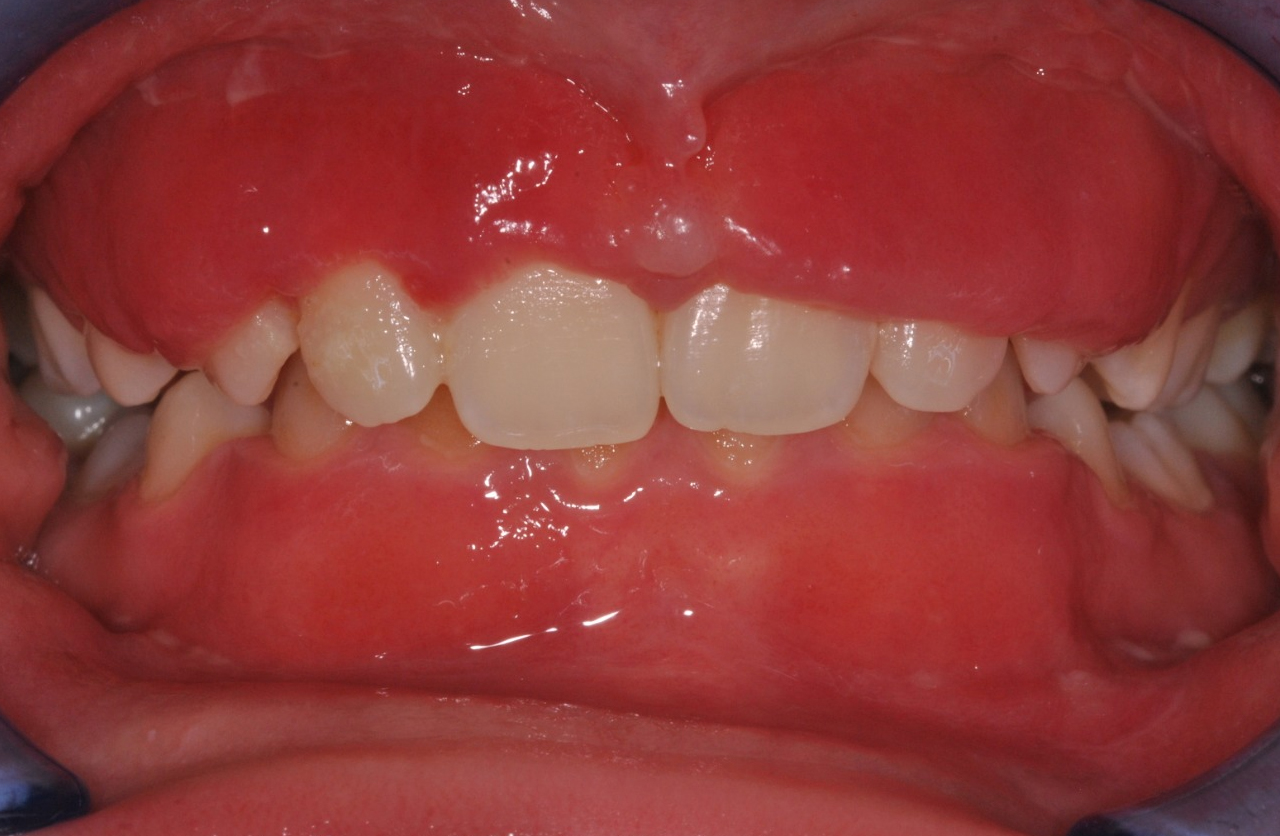Orofacial granulomatosis with severe gingival involvement.

Downloads
DOI:
https://doi.org/10.26326/2281-9649.30.3.2153How to Cite
Abstract
Orofacial granulomatosis is considered a monosymptomatic form of Melkersson-Rosenthal syndrome (4); many Authors classify it together with anogenital granulomatosis as a single entity. From an etiological point of view, the relationships of this entity with Crohn’s disease was underlined; the latter can follow cases initially diagnosed as orofacial and anogenital granulomatosis. However, between the cases associated with Crohn’s disease and those not associated there is no difference either from a clinical or histological point of view, so much so that many Authors believe that the cases of isolated granulomatosis are mild, exclusively cutaneous forms of Crohn’s disease. The association with Crohn’s disease is more frequent in anogenital granulomatosis; however, it is also found in the orofacial form. Much rarer is the association of granulomatosis with sarcoidosis and even less with tuberculosis.
Differential diagnosis must be made with hereditary angioedema in the initial forms when the edema is transient; in doubtful cases the dosage of C1-INH is decisive. Another differential diagnosis must be made with strawberry gingivitis of granulomatosis with polyangiitis or Wegener’s syndrome (3), in which the general state is compromised, there is pulmonary and renal involvement and the ANCA are positive. In the forms of granulomatosis in which gingival involvement prevails, plasma cell gingivitis (2) must be excluded, the infiltrate of which does not contain epithelioid and giant cell granulomas; it is also necessary to exclude gingival hyperplasia due to phenytoin, nifedipine, cyclosporine with the help of the anamnesis (6).
The most important problem, however, is the treatment especially in children, in whom intralesional corticosteroid therapy, which seems to be the most effective in adults (7), is not possible. Topical corticosteroid therapy can be reserved for the milder forms, the systemic one must be implemented, at least during periods of aggravation and in any case when the child is unable to attend school regularly, taking into account the transient effect of corticosteroids and the long duration of the disease. In literature (1) there are also cases of adults successfully treated with anti-TNF biological drugs. There are also sporadic cases treated with antibiotics (5), clofazimin, metronidazole, dapsone, ketotifen (7).
